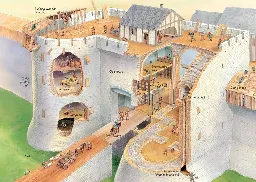Wikipedia has a very detailed article on them: https://en.wikipedia.org/wiki/Cucuteni–Trypillia_culture
One of the most notable aspects of this culture was the periodic destruction of settlements, with each single-habitation site having a lifetime of roughly 60 to 80 years. The purpose of burning these settlements is a subject of debate among scholars; some of the settlements were reconstructed several times on top of earlier habitational levels, preserving the shape and the orientation of the older buildings. One location, the Poduri site in Romania, revealed thirteen habitation levels that were constructed on top of each other over many years.
Alternative take: Every 80 or so years, some arsehole accidentally sets the village on fire.
Maybe just getting rid of mouldy homes.
Arson usually has some human remains, who were inside the houses, but it’s not the case here, there are burned bones from earlier and latter cultures, but not from here (if I understand this correctly):
For example early Neolithic houses have more artifacts deposited in them, and it is in these early Neolithic phases that burned human remains are most likely to occur (Chapman 1999). Human remains occur again in the late Eneolithic (Gumelniţa/Karanovo VI). The presence or absence of human remains in the rubble of burned houses is clearly of great significance.


